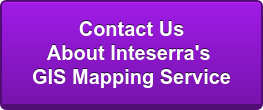 The Regulatory Mix, TMI’s daily blog of regulatory activities, is a snapshot of PUC, FCC, legislative, and occasionally court issues that our regulatory monitoring team uncovers each day. Depending on their significance, some items may be the subject of a TMI Briefing.
The Regulatory Mix, TMI’s daily blog of regulatory activities, is a snapshot of PUC, FCC, legislative, and occasionally court issues that our regulatory monitoring team uncovers each day. Depending on their significance, some items may be the subject of a TMI Briefing.
TELECOM
US Congress
The House Energy and Commerce Committee is launching an investigation into waste, fraud, and abuse in Universal Service Lifeline program. The investigation comes on the heels of the FCC’s $51,070,322.00 Notice of Apparent Liability issued to Total Call Mobile for apparently enrolling tens of thousands of duplicate and ineligible consumers into the Lifeline program. See our 4/11/16 Blog “FCC Proposes Record Fine Over Lifeline Program Abuse.” The investigation is in response to a request by Committee member Rep. Mike Pompeo (R-KS). In opening the investigation, Chairman Fred Upton (R-MI) agreed that “[g]iven the enforcement action taken against Total Call Mobile, I agree that this most recent allegation of fraud, coupled with what appears to be a lack of prompt action on the part of the Commission, warrants the additional scrutiny of the Committee … As you so aptly observe, such action is necessary to ensure not only that ratepayer dollars are responsibly spent but also to ensure the long-term effectiveness of the program for those that truly need the assistance.”
FCC
Jamming Forfeitures
The FCC issued a $34.9 million fine against C.T.S. Technology, a Chinese electronics manufacturer and online retailer, for marketing and selling signal jamming devices to U.S. consumers. (Jammers are radio frequency transmitters that intentionally block, jam, or interfere with wireless communications, such as cellphone calls, GPS systems, Wi-Fi networks, and first responder communications.) The company marketed 285 jammer models in the US through its own websites and third party platforms. The jammers ranged from small, concealable devices that would block cell phone or GPS communications for a radius of only a few yards, to high-powered jammers that could disrupt a wide range of communications systems for several blocks. The company’s website falsely claimed that some jammers had been approved by the FCC, and advertised that the company could ship signal jammers to consumers in the US.
The FCC also issued a $48,000 fine against Jason R. Humphreys for using a cell phone jamming device in his car during his daily work commute to and from Tampa, Florida. Mr. Humphreys’ illegal operation of the jammer continued for up to two years, caused interference to cellular service along Interstate 4, and disrupted police communications.
SADC (aka Business Data Services Data Collection)
The FCC released another list of additional parties that have signed an acknowledgement of confidentiality (AOC) and that seek to review the data gathered through the FCC’s special access data collection (SADC). The list includes persons that signed an AOC since the FCC’s last Public Notice. Companies that submitted confidential or highly confidential information in response to the SADC have until June 6, 2016, to object to the disclosure of their data and information to any of the parties on the list.
California
The PUC’s Policy and Planning Division released a report which included information about broadband availability across California at the zip code level. The report shows that wireline broadband service covers 90% or more of households in 35 counties and that 60% of households in four counties are unserved. Using maps to demonstrate, the report shows the vast majority of underserved or unserved households are concentrated in the North Coast, Mountain, Central Valley, and Desert regions.
New York
The North American Numbering Plan Administrator petitioned the PSC to approve the Industry’s consensus decision to recommend an all services distributed overlay of the 518 NPA. The recommendation is based on the NANPA’s projections that the supply of CO codes for the 518 NPA will exhaust during the first quarter of 2019.





